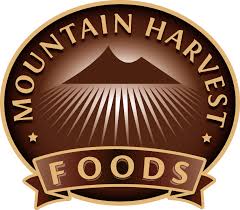Most if not all natural and fresh foods without any form of processing contains the highest level of nutrients, and have the best flavour and texture.
The reason fresh foods are perishable in relatively shorter time compared to processed foods, is due to the active presence of microorganisms such as fungi, yeast, bacteria, and their enzymes. Enzymesactivities promote chemical reactions within tissues of foods, and this contributes to the deterioration of food quality. A simple explanation would be that chemical reactions resulted in by-products, as harvested and slaughtered food is no longer living, these by-products could not be metabolised or removed from tissues and accumulate, thus in time, decay and damage these tissues.
The only benefit that I can think of processed and preserved food, is that usually they tend to have a longer shelf life. However, preservation of food usually involve loading it with unhealthy amounts of additives and chemicals. If these additives, such as salt and sugar, could be removed from our body through the kidneys and liver, these compounds will laden the workload of our organs. However, if the compounds tend to be accumulated within our body, the effect would be detrimental to our health, and may possibly be deadly in the long run. Also, exposure of fresh food to heat, light, alkaline or acidic condition, cell damage from chopping and cutting, lead to proteins, vitamins and minerals being denatured, oxidised, and destroyed.
One of the safest ways to preserve food without introduction of any additives is by freezing. Almost all types of food can be frozen. Reports from USDA had shown that freezing do not destroy food’s nutrients. However, depending on the type of food, loss in flavour, texture, and colour is very much expected when foods are frozen. Also, food is best frozen fresh, before its nutrients begin to degenerate with time. Thus, freezing food just before it goes bad, will in fact, not help in preserving its nutritional value. Microorganisms such as bacteria would be inactivated, but not destroyed, when frozen, thus food would no longer decay and deteriorate. However, once food is thawed, activities of microorganisms continue and foodshould be handled as we would fresh food, to ensure its safety for consumption.
Another alternative of safe food preservation is by drying. Drying is usually done by heating and removing moisture from food, and it is easier to dry plant based products than animalbased products. Furthermore, drying of animal based products usually involve addition of salt. Loss of nutrients is mostly due to heat, instead of moisture loss. Also, more nutrientsare actually lost while processing the foodstuff prior to the drying process. Most importantly, dried food should be kept dry at all times to preserve its quality. Introduction of moisture to dried food will lead to moulding, as mould spores are practically ubiquitous. To be on the safe side, mouldy food should be discarded completely. Mould forms roots deep into the tissues of foodstuffs, thus cleaning or cutting away the visible mouldy parts will not guarantee that food is free of mould. Drying of food will correspondingly concentrates the content of nutrients, thus nutrition level of dried food is much higher as compared to a similar weight of fresh, moisture packed food. However, sugar, salt and fat contents are higher as well in dried foods, something we should keep in mind during food preparation.
Learn more food preservation here at the best seller frozen food suppliers sydney.
